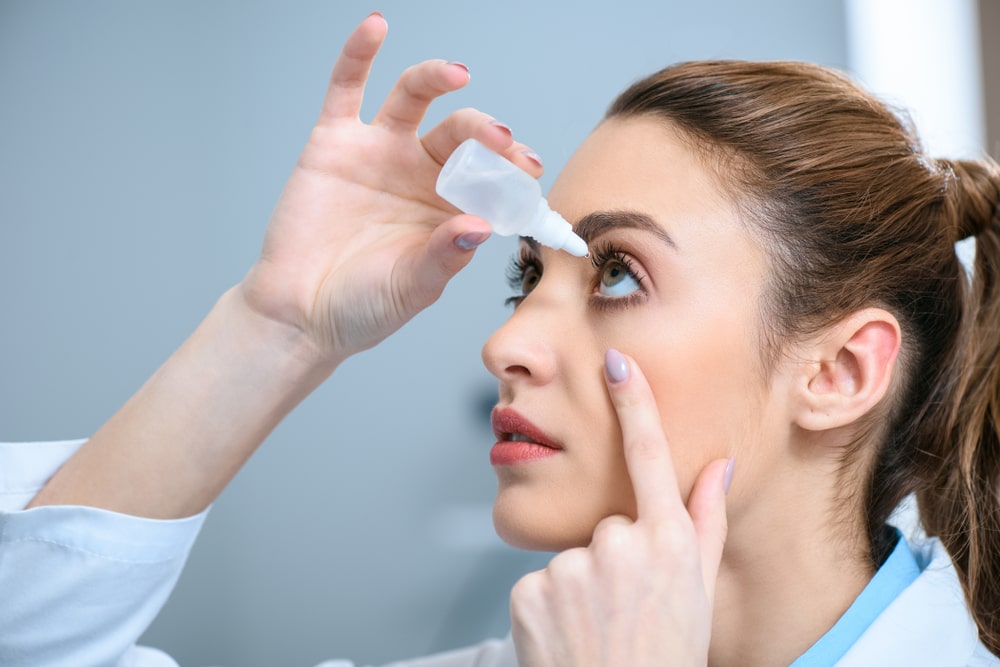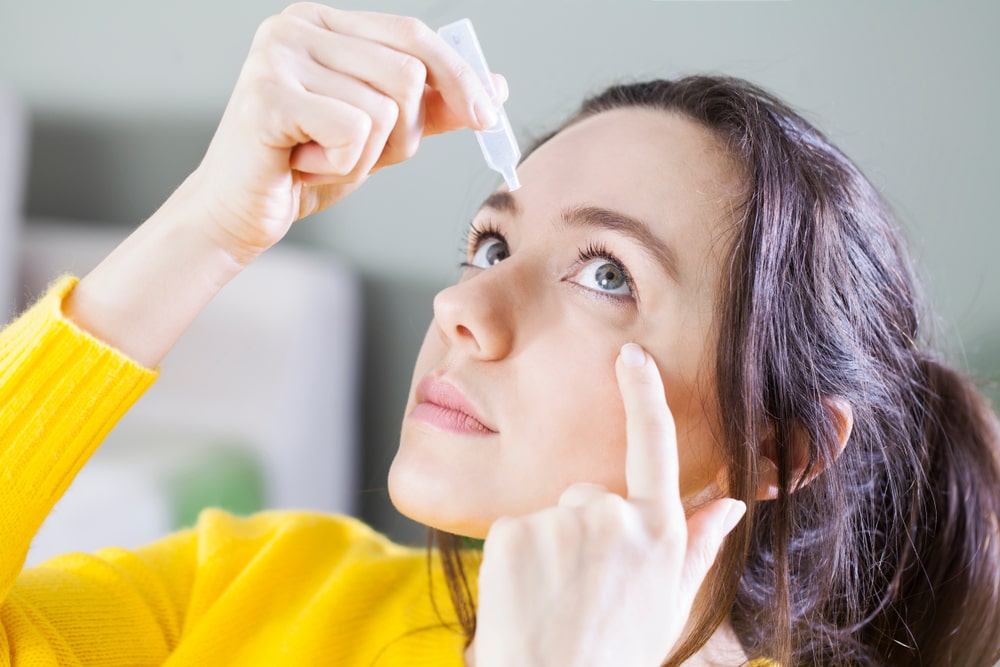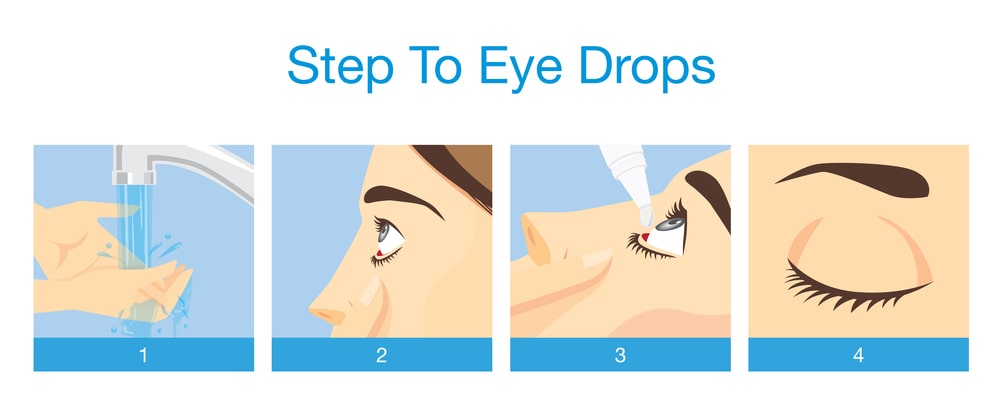Evaluation of Ophthalmic Suspension:
Table of Contents
Tests for Physical Stability (include the General Test):
(a) Sedimentation rate:
- The rate at which the suspension particles settle in the vehicle is called sedimentation rate.
- The ratio of the sedimentation volume to time gives the sedimentation rate.
- Different samples of the suspension are taken and sedimentation volumes are determined graph plotted between the sedimentation volume (on the y-axis).
- Time (on the x-axis)-horizontal curve and slope of the graph gives the sedimentation rate.
- The sedimentation rate should be low to facilitate the installation of a uniform dose each time.

(b) Redispersibility:
- The sediment formed during storage of the suspension should be easily dispersible by normal shaking to provide a uniform dose at all times.
- Redispersibility depends on the surface tension of a suspension.
- Different samples are collected and the surface tension of each is determined.
- The lesser the surface tension of a sample, the more dispersible it is.
(c) Viscosity:
- Using Brookfield viscometer, the viscosity of different samples is determined.
- More is the viscosity of a sample, less is the rate of setting of particles and more is the stability.
(d) Particle size:
- Smaller particles settle at a slow rate and implicate the stability of a suspension
- Using colter counter apparatus or photomicroscopy.
- The particle size of the different samples is determined.
- Out of the 50 particles tested, 20 are not more than 25 µ, 10 are not more than 50 µ and no particle is more than 100 µ in size.
Evaluation of Ophthalmic Ointment:
(a) Test for Minimum Fall:
- Nearly five ointment tubes are selected at random.
- The net weight of the ointment in each tube is determined.
- The result should match with the quantity specified on the label of the tubes.
- This test is to be as certain that each tube is filled with the minimum specified quantity.
(b) Test for Metal Particles:
- This test is to be certain that the ointment is not contaminated by the particles of the packaging material which can irritate the ocular tissue.
- Different samples are collected from ten ointment tubes.
- Each sample is melted using heat.
- Then examined under a microscope for metal particles.
- The particles identified are counted and their size is measured with the help of an eyepiece micrometer.
- For the total samples, the total number of metal particles (sized 10 µm or more) is more than 50 and only one sample contains more than 8 particles.
(C) Squeesability:
- Represent the product output and the minimum amount to be expelled out.
Evaluation of Ophthalmic Emulsion:
The quality of the emulsion can be determined by:
- Globule size
- Globule size distribution
- Physical appearance
- Spreadability
Evaluation of Ophthalmic Gels:
- Viscosity
- Clarity
- Spreadability
- Residence time

Evaluation of Ophthalmic In-situ Gel:
(i) Gelling time:
- The time taken by the gel-forming solution to transform into the gel phase is called gelling time.
- The gelling time should be less so that the onset of action will be fast.
(ii) Viscosity:
- It is checked at both room temperature and body temperature.
Evaluation of Ophthalmic Injection:
1. Test for Pyrogens: Ophthalmic injections are tested for the presence of pyrogen.
- Pyrogens are endotoxins that are produced by gram-negative bacteria.
- The test for pyrogens is carried out on aqueous preparation also.
- Rabbits are the test animals that are considered for test for pyrogen of quick response and it should be around 1.5 kg.
(a) Selection of rabbit /animal: condition:
- The weight of the rabbit is 1.5 kg – 2.5 kg and it should be constant.
- It should be free from disease.
- The washout period should be a minimum of 2 weeks to be considered.
Procedure:
- The rabbit should have a normal temperature (body temperature of 38.3o C- 39.4o C (101o F -103o F).
- A body temperature greater than 49.8 oC should not be selected for the test.
- If any rabbit has been used for the positive test during the last 2 weeks or negative test during 2 days should not be selected again for the test.
- Syringes or needles or glass was used in this procedure should be free from pyrogen
- It can be sterilized by heat.
- The animal has to fast for 12 hours before the test and then be injected into the ear vein.
- Observe the changes.
- Once after injection, the temperature has to be observed after 1-2 hours.
- The different initial and final temperature readings should not excess 1-4o C (for average animals) and should not exceed 0.6o C (for individual animals).

(b) LAL test (Limulus amoebocyte lysate test):
- For identification of gram-positive bacteria.
- An enzyme is produced by a horseshoe crab.
- Test for particulate matter
To identify particulate matter, four different methods are used:
- Visual method
- Light blockage method
- Filtration method
- Coulter counter method

(i) Visual methods: The sample is filled in the container and is carried out to identified the foreign particles against a black and white background in presence of light. In the case of a colorless solution, white background is used and for a colored solution, black background is used.
(ii) Light blockage method: Instrument consists of the bright white light source and photodiode sensor.
- The sample to be tested is allowed to pass through the instrument.
- The stream of the sample solution passes between the light source and the photodiode sensor.
- The instrument measures the cross-sectional area of the particles and the size of the particles can be easily determined by the method is employed for hydraulic oils.
(iii) Filtration method: The samples are filtered through a membranes filter with a pore size of 0.02 µm.
- The particle should be microscopy (to know the particle size and weight) if the particle is higher it has to be discarded.
(iv) Coulter counter method: The colter counter is an electrical method to determine the particle size.
- It consists of two electrodes and an orifice.
- Electrodes are connected to an amplifier.
- When a particle passes through the orifice, increased electrical retention is observed.
- This is because the particle displaces its volume of the electrolyte, hence particle size is determined.
- The determined particle size of diameter below 0.1 mm.
2. Packaging Test /Test for Packaging:
(i) Leakage test: The test is carried out in ampoules.
- This method is employed to see whether the ampoules which are sealed by the fusion method are intact or not.
- In the vacuum chamber, vacuum is applied and ampoules are dipped in 1% sodium methylene blue solution.
- After releasing the vacuum, the ampoules are checked for leakage if any evaluation is done by examining whether the dye enters the ampoules or not.
- If the preparation becomes colored it indicates there is leakage in the container, hence the particular batch will be rejected.
(ii) Spark detector method: This is also a method of determination of leakage in the container carried out if the pot present in the ampoules is thermolabile (e.g. vaccine).
- The ampoule contains an inert gas and the sample is introduced into the spark detector, the gas inside the impulse gloves.
- This indicates that the container is intact and free from any leakage.
Make sure you also check our other amazing Article on : Packaging of Ophthalmic Preparation